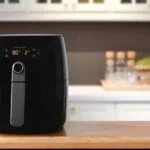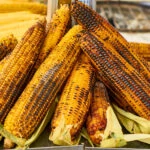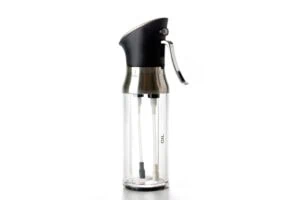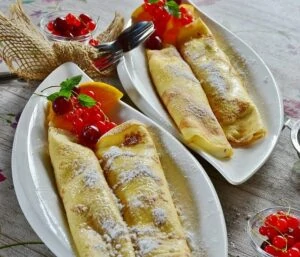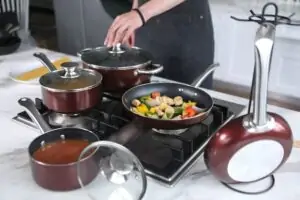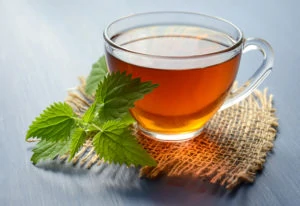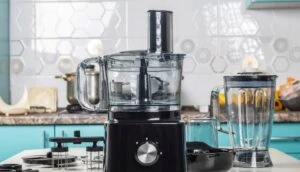Glass stove tops are a beautiful addition to any kitchen, but man, are they fragile! If you have some heavy-duty cast iron cookware, you might cringe at the thought of them sitting on a pristine glass surface. In fact, many cooks out there will say to avoid using cast iron cookware on a glass stove top at all times.
Cast iron cookware has been around for decades and is tough and durable enough for high heat campfire cooking and going into ovens. While traditional coil stoves can handle a cast iron skillet with no problem, a glass stovetop will experience a little wear and tear if you’re not careful.
Don’t worry, though! It is possible to use cast iron on a glass stovetop safely. Let’s discuss the different things you can do to protect a glass stovetop from damage caused by a cast iron pan. This way, you can enjoy all the benefits of cast iron, even with a glass stovetop.
How to Protect Glass Stove Tops from Cast Iron Cookware
You shouldn’t have to avoid using your favorite cast iron kitchen essentials just because you have a glass top! When it comes to protecting your glass top stove from cast iron, there are all kinds of things to try. By trying any of these methods, you can cook on your glass stove with
Keep Your Cast Iron Clean
Though you should do this anyway, keeping your cast iron pan clean can help to prevent damage to your cooking surface! In addition to cleaning well after cooking, it’s a good idea to clean the pan, inside and out, every so often.
Doing so can remove any outside build-up, stickiness, or residue forming on the outside of the pan. You can do this with any good kitchen scrubbing brush to ensure the part of the pan touching the stovetop is squeaky clean and won’t be as abrasive.
Regularly Clean Your Stove
Again, this one may seem obvious, but cleaning your stove can also make a difference. Clean glass stovetops regularly to maintain their sleek appearance. You probably have to clean a glass stop stove even more often than electric or coil stoves.
It’s easy for food residue to build up on the surface of a glass stovetop. To ensure this buildup doesn’t become stubbornly stuck or scratch up your surface, clean it right away! It’s a good idea to wipe down your glass stovetop every time you cook on it, once it’s cooled down.
On top of wiping down your stovetop every day, you should also deep clean your glass stovetop once a month. Cleaners like Bar Keepers Friend can work miracles, but any conventional glass cooktop cleaner should do the trick.
The cleaner your stovetop surface, the less likely things will become trapped between your heavy cast iron pan and the glass surface. This means fewer scratches and stains!
Never Slide Your Cast Iron Pan
If you’re cooking on a glass stovetop, the easiest way to avoid damage is to make sure you never slide your pan across the cooktop surface. Try to place down your cookware gently whenever cooking. If you need to move it and adjust its position, pick it up and set it back down, rather than sliding it around the cooking element. This will decrease potential damages to your glass cooktop.
Buy a Heat Diffuser
A heat diffuser is a handy kitchen tool when cooking on glass tops. These utensils help heat spread more evenly across the bottom surface of a cooking pan. Sometimes they can be made of coated cast iron, but often they are made of smoother metals like nickel or plated steel.
These tools help cooks avoid hot spots in their pans, but they also work well for protecting glass tops from rough cookware. A heat diffuser can put a layer of protection between your glass stove and the bottom of your cast iron skillet without compromising the pan’s ability to pick up and maintain high levels of heat. They make a great solution for those looking to protect their stoves.
Invest in a Glass Stove Top Cover
Yes, these do exist! To prevent your stove from damage and make cleaning a breeze, get a glass stove top cover. These covers are often made of rubber or silicone and go over the entire surface of your stove. These will offer a layer of protection between your stovetop and any cookware you place on top, meaning cast iron won’t leave scratches.
You can also easily remove these covers for fast cleaning after use. Making grilled cheese and getting melted cheese everywhere? No worries! Your cover will catch anything you drop, protecting your stovetop from scorched food. Then, the cover can be cleaned in the sink, with no problem.
Buy Newer Cast Iron
Cast iron is a type of cookware that cooks have been using for a long, long time. There’s a good chance some of the cast iron tools you use to cook are inherited pieces passed down from family.
Older cast iron skillets are often one single piece of cast iron, with no external shell or coating. This rough material can easily scratch more fragile materials like glass.
To combat this, invest in newer cast iron cookware or even cast-iron lined pans. Some newer types of cast iron will have smoother, enamel coatings that won’t scratch glass as easily as traditional cast iron. They are much safer for use on glass!
How to Remove Cast Iron Damage on a Glass Top Stove
While preventative measures can be helpful, they aren’t good if the damage has already been done. Thankfully, there are some things you can do to fix the imperfections cast iron can cause. If you’ve damaged your glass top stove already, try the following:
For Small Scratches: Try Baking Soda!
This method won’t work for scratches that are crazy deep or large cracks, but it can help smaller damage! If your cast iron has left small scratches on the surface of your glass stovetop, do the following:
- Combine two teaspoons of baking soda and one teaspoon of water to make a fine paste. The paste should be wet and smooth, with no lumps or clumps to cause further damage.
- Next, take some of the paste onto a cloth or the soft side of a sponge. Apply it to the scratches on your stovetop.
- Begin to buff the past into the scratches, moving your sponge in small circular motions.
- Afterward, use a damp towel to wipe away the paste.
Tip: To use this method, make sure your stove is off, and the surface is cool!
For Burnt On Food: Use a Razor Blade!
This problem isn’t unique to cast iron, as cooking with any cookware can lead to food residue getting on the surface of your stove. However, cast iron’s ability to hold and maintain high temps does lead to burnt-on foods more frequently if residue gets out of the pan and between the pan bottom and the element.
Unfortunately, with a glass top, it can be extra hard to remove burnt-on food. With this method, though, you can remove it easier.
Take extra care when using this cleaning method. A raw razor can be small and extremely dangerous in the wrong hands. Make sure the razor is stored safely after use. It’s also important to make sure your stove is turned off and cool before trying this.
- Make a mixture of equal parts warm water and vinegar. Put into a spray bottle, and spray on the surface of your stove.
- Let the mixture sit on your glass top for 3-4 minutes. The burnt stains should begin to become soft.
- Take a razor blade and begin to gently scrape along the surface of the glass at an angle. Angling the blade is important to prevent any deep scratching on the glass.
- If residue is still stuck, spray on more vinegar and let it sit. Then, take your razor, and scrape again.
- Once all burnt residue is lifted off the surface, wipe away the residue and the vinegar solution with a damp cloth. Your stove is now clean!
Tip: If your stovetop came with an instruction manual, read it before trying this! There are some glass stovetop models where cleaning with a razor is not advised.


